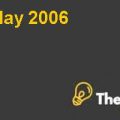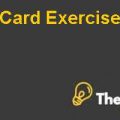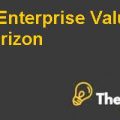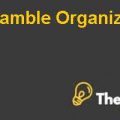Evaluate the deal from HPC's perspective. As a starting point, consider a scenario with $35 million of mezzanine debt with a 14% coupon - of which 10% are cash 4% PIK - and warrants for 10% of the equity with a minimal exercise price.
HPC is investing a total of $35 million to get a coupon rate of 14% with 10% cash return; the return is very attractive as if the payment in kind is also considered as the average return of Quantum, Western and Maxtor are around 10% to 11%. Therefore, the return is high and attractive.
How attractive is the AccuFlow deal, i.e., should HPC want to finance it?
The deal is attractive on the basis of the return that i.e. around 14%, the cash return is however not so attractive, i.e. 10% for taking an investment risk of amounting to $35 million. The extra compensation of payment is the attractive mean for HPC to invest into the company. The other thing that is necessary to consider the equity participation, the equity participation must be according to the value of the company i.e. $229 million. The total value of equity is only $77 million, the equity ratio must be accordingly because HPC holds a risk of $35 million and the appropriate compensation must be demanded for that loan amount. The equity negotiation must be 45.5% that is the fair value of HPC’s investment in HPC. The other thing about the attractiveness of the deal is a penalty amount of 4% that can be imposed on the payment delay option, therefore the extra amount can be receipted for delay in payment. The deal seems to be attractive for HPC for having such returns and exit strategy in 7 to 10 years of tenure.
How attractive is the transaction? How much money does HPC have to provide? What coupon should HPC charge? What fraction of the equity should HPC ask for? What IRR will they expect to earn? (Hint: To do this, you will need to know how much debt AccuFlow will have in the year you choose to exit. Assume that all extra cash flow is used to pay down debt.)
The transaction is attractive on the basis of giving facts, but there must be some of the modifications and additions that must be negotiated from HPC to AccuFlow. The cash compensation must be above 10%, 11% is more acceptable and 3% payment in kind can work for HPC. The internal rate of return must be 14% because the company is risky due to negative retained earnings and equity value. However, the compensation of 11% is to reduce the risk of any uncertainty related to payment in kind, at least HPC can get the required return in cash terms.
The equity fraction it requires is around 45.5% or more that is the value of the company’s share of $35 million (Appendix). HPC must try to ask for a high amount however, it must not accept the equity fraction less than this specified fraction.
AccuFlow can generate an internal rate of return of 12.3%, i.e. required return of the company’s stakeholders, the return is attractive. Although the required return of HPC is high i.e. 14%, however the cash return of 12.5% is still attractive for HPC because it is higher than that market returns averages.
What do you think the actual deal will look like relative to the starting point?
The deal’s starting point must be on the basis of cash return and payment in kind because these two things have forts importance for both the organizations. Moreover, if both parties agree with the payment and compensation, then they must consider about the penalty for delay of the payments. The final discussion must be on equity fraction and valuation bases.Accuflow Case Solutions
What enterprise value is the company worth to Cunningham? At that enterprise value, what would the VC stake be worth? What price should Cunningham offer to Greylock? What price will Greylock accept? Will they be able to negotiate a deal?
For Cunningham, the enterprise value worth $250 million to $380 million, the value does not seem to be realistic because the real value through free cash flow model is $229 million. The venture capitalists hold 62% of the equity in the company and they are taking an offer of $103 million. Currently, the company has a total liability of $154 million and it has a total equity value of 77 million...............
vThis is just a sample partial case solution. Please place the order on the website to order your own originally done case solution.









